Is cursive considered Calligraphy?
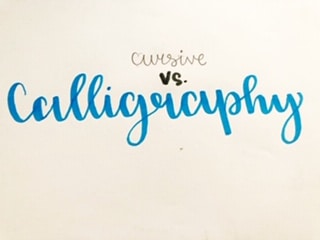
A lot of new beginners into calligraphy, or lettering, have asked me is cursive considered Calligraphy. They are thinking if I just learn cursive I could master the calligraphy fundamentals.
Cursive is not considered calligraphy. Lettering is the art of illustrations with letters. While cursive is writing down letters in a certain manner.
There is a lot of differences between cursive and lettering that I am going to be showing you today.
In this article, I am going to be talking about the main differences between calligraphy and cursive. This is just a summary of the article.
- The main differences between calligraphy and cursive
- Why you shouldn’t be practicing cursive to get better at lettering
Now let’s get started
The Main Differences between Calligraphy and Cursive
Here I am just going to give a list of differences and then I will explain all of them.
- Upstrokes are Thin Downstrokes are Thick
- Lettering Format (The Basic Strokes)
- The Meaning
Upstrokes are Thin, Downstrokes are Thick
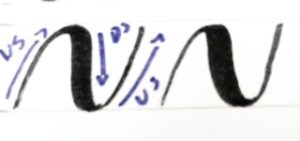
The number one rule that you have probably have heard in all different types of lettering has been that upstrokes are thin and downstrokes are thick.
But some people have no clue of where to make thick strokes or thin strokes, which means you are doing something wrong.
With cursive, there is of course no line variation between letters leading for some people to think that in calligraphy you can put line variation anywhere.
This main rule helps beginners understand that whenever you are doing a downstroke you are going to apply more pressure to your pen, than if you were doing an upstroke.
When many others, think that you can apply the downstrokes anywhere you like to, this especially happens with faux calligraphy.
With faux calligraphy, many people just write out cursive and put the downstrokes where every they like. This is wrong, since calligraphy is not cursive, and there is a certain place to put your thick strokes.
Move on to…
Lettering Format ( The Basic Strokes)
All of that I have said above is also going to apply to the basic strokes of calligraphy.
You might now think that if you make thick strokes whenever you go down and thin strokes when you go up , that we have calligraphy.
Wrong…
Take a moment to know what these are:
- Upstroke
- Downstroke
- Ascending Loop
- Descending Loop
- Oval
- Compound Curve
- Under turn
- Overturn
The Basic Strokes can be used to form almost any lowercase letter in calligraphy.
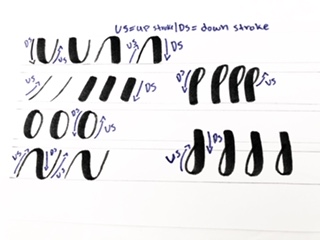
Now Back To What I Was Talking About Before…
If you are doing this I would inform you to stop and learn the basic strokes of calligraphy. Cursive doesn’t include these basic strokes and that is why it is not considered calligraphy, which means you are formatting your letters in the wrong way.
Here is what I mean. With the letter B, you would use and Ascending loop and oval.
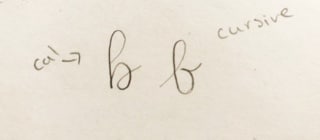
As you can tell there are some very big differences.
here is the same thing with the letter D.
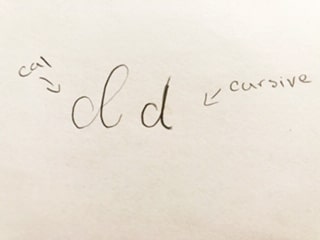
The thing is sometimes people don’t care about the difference but the only way that you are going to be able to Master Lettering is by starting off with the Basic Strokes.
Once you get that down, break the rules if you have to, BUT AFTER learning the fundamentals.
At the end of the article, I explain in detail all of the basic fundamentals of lettering.
The Meaning
I sort of talked about the meaning of the different things at the beginning of the article. Lettering/ Modern Calligraphy is the art of illustrating letters. It is about creating your own style that is different and awesome.
While…
Cursive is just a form of handwriting that is taught to you in 3rd grade, well that was how it was for me.
Lettering is something that is an art and a form to express yourself through these lettering illustrations. It is an art form and a lot of people don’t think about it in that way.
While the meaning of Cursive is just a form of HANDWRITING not ILLUSTRATING.
There is a difference…
ILLUSTRATING is like drawing and being able to express yourself through an art form. While WRITING SOMETHING DOWN is just writing.
Plane and simple.
Now I am going to go in deeper into…
Why You Shouldn’t Be Practicing Cursive For Lettering
I have sort of explained most of this above but I really want to make it clear. The main thing is just to practice the fundamentals of lettering.
There is also something that you should consider.
Perfect practice makes perfect.
Not…
Practice makes perfect.
So if there are two different people (one practicing calligraphy the right way, one practicing calligraphy the wrong way) which one do you think is going to master lettering. Of course, it is going to be the person who is practicing calligraphy the right way.
If you have started out caligraphy by not practicing the basic strokes and instead going straight into the letters, you are practicing it the wrong way.
So remember if you practice the imperfect way you are not going to get anywhere.
BUT WHAT IS THE PERFECT WAY
As a young beginner, you should before anything learn the basic strokes of calligraphy.
Afterward, move onto the letters and use the basic strokes to form those letters.
Here is a quick example:

Then start trying to conncect your letters.
I explain more of this process in this article here.
Conclusion
Now you have learned that cursive is not the same thing as calligraphy and how you can start practicing the righ way.
You have also learned that starting off with the basic strokes will benefit you in the long run.
Just remember these are just the guidelines. After mastering the basics start breaking some rules and come up with your own style of calligraphy.
If you have any questions feel free to comment.